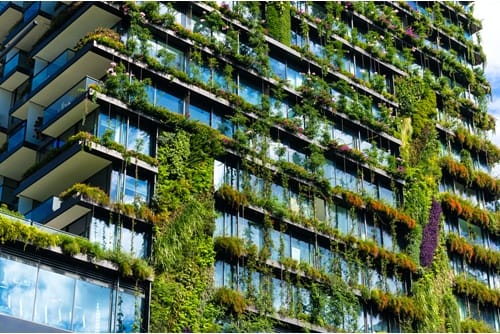Wishful Thinking
Change is a constant. It's hard not to love that little paradox. At the same time, with yet another new housing minister for the industry, it also makes me wince just a little.
Wishful Thinking
Change is a constant. It’s hard not to love that little paradox. At the same time, with yet another new housing minister for the industry, it also makes me wince just a little.
Kit Malthouse is the new baton-carrier in chief for housing delivery and early indications are that we will see relative continuity in policy terms. Kit has a solid pedigree understanding the complexities of development through his days in London local politics and is well-placed to make a meaningful contribution to Government’s housing supply ambitions. For this we should be thankful - and a little relieved.
Unaffordability is a national scourge, new supply across the spectrum of tenures still matters and modernising our systems of production through digital construction is still very much on the agenda. As ever, the 'how' element of these issues is the biggest challenge. Kit has his work cut out.
Homes England is also on the job, but housing remains the most important domestic policy agenda outside of flu season, so we all hope Kit has more to offer. Through the prism of Grenfell and negative news stories on the experiences of new build customers, we need to ensure that the drive for greater volume does not come at the cost of quality. On that basis I would like to rekindle an old favourite that was a forgotten victim of the global recession - sustainability.
There will be howls of indignation in some quarters I'm sure, but the fact is, we have made no meaningful strides towards an uprating of sustainable quality in new homes in the last decade and we are a long way backwards in regulatory terms. Anyone remember the drive towards 'zero carbon' homes?
Our collective failure to improve the sustainability of UK housing delivery should be an embarrassment. As someone who regularly tours international practitioners around UK product I can assure you our sustainability credentials are several steps off the pace. Sustainability isn't just about the environment, and this isn’t one of those browbeats to 'do better' for dear Mother Earth. This is an argument for sustainability on commercial terms. Yes, that's right; sustainable residential design can help make you money.
The Rapacious Tree Hugger
OK, I admit - this is actually more of a cost savings than revenue generation story. Anyway, I've hooked you now, so stay with me as its about to get good.
In the decade since the global recession, the UK housing market has indeed both changed, and stayed the same. We have all of those same challenges of unaffordability and under supply. We also run a constant narrative of needing to 'do something' while at the same time achieving very little. There are however, two notable exceptions.
First, the growth in Build to Rent during this cycle is actually pretty extraordinary. Latest British Property Federation statistics speak for themselves, with over 22,000 units now completed and over 100,000 committed units on the way. Those figures were zero and zero respectively, 10 years ago.
The other really big shift I would like to note is Registered Provider consolidation. The big are getting bigger and moreover, the full spectrum of Registered Providers are getting smarter and more efficient with the use of balance sheet leverage in capital markets and in selective engagement with market-facing activity to cross-subsidise core activity.
These changes, it turns out, are quite important for the commercial viability of sustainable homes. In short, a transition towards long-term management of product rather than sales-orientated delivery creates an alignment of interests between the ongoing management of residential buildings and the people who live there. That matters a lot, because just like in the commercial property sector when investors are reaping the benefits of up front investments, they tend to make different decisions.
In a world dominated by ‘for-sale’ product, and a consumer’s marginal willingness to pay barely above zero, sustainability is delivered through regulation. However, as Build to Rent investors and their Registered Provider cousins are squeezing the last pips of value out of newly created assets, which they intend to hold for the long-term, investment in sustainable features like better insulation, triple-glazing, and smart metering, for example, is good business.
To illustrate, a typical erosion of gross to net yield might be circa 25% today on a Build to Rent asset. Imagine what would happen to running returns if that became 22% or even tighter? A 3% savings on running costs generates a net cash improvement of £2.2 million on a sample 200 unit block that JLL recently studied. As more and more buildings are traded on investment value, as determined by cash flow, this is a breakthrough moment. Not bad, for a tree hugger.
Up-front costs have always been the hurdle for sustainable investment. Zero carbon delivery (setting aside this issue of how this is actually defined) was assumed to add something like 25% - 30% to build costs 10 years ago. However the UK industry is transitioning towards manufactured solutions which will help innovators in the sector to militate against many of the input costs associated with sustainable delivery.
Put differently, in a world where digital construction through off-site manufacturing is enabling precision-engineering for home design, that 25%-30% build cost premium is now way off the mark. In fact, there are manufacturers in the UK today that already believe they can already achieve something like the former ‘zero carbon’ standard for a sub-10% premium over traditional construction. We are nearing the commercial tipping point for sustainable housing delivery.
Digital construction creates a systems approach to housing delivery. Tighter design tolerances for joins in the manufactured home are combined with better programming for trades and integration of sustainable components. Together, this represents a higher quality final product at little or no additions to the unit cost of production. This is a different language to traditional construction, but it will enable a new and better approach to the way homes are made.
Sustainability in new UK housing stock will still struggle to attract a green premium from buyers. It may also have some resistance from corners of both the public and private sector. But investment in sustainable design is very likely to change the way we deliver homes sooner than expected by finally unlocking the financial viability that underpins good commercial decisions.
In that sense, I guess some things never change.




